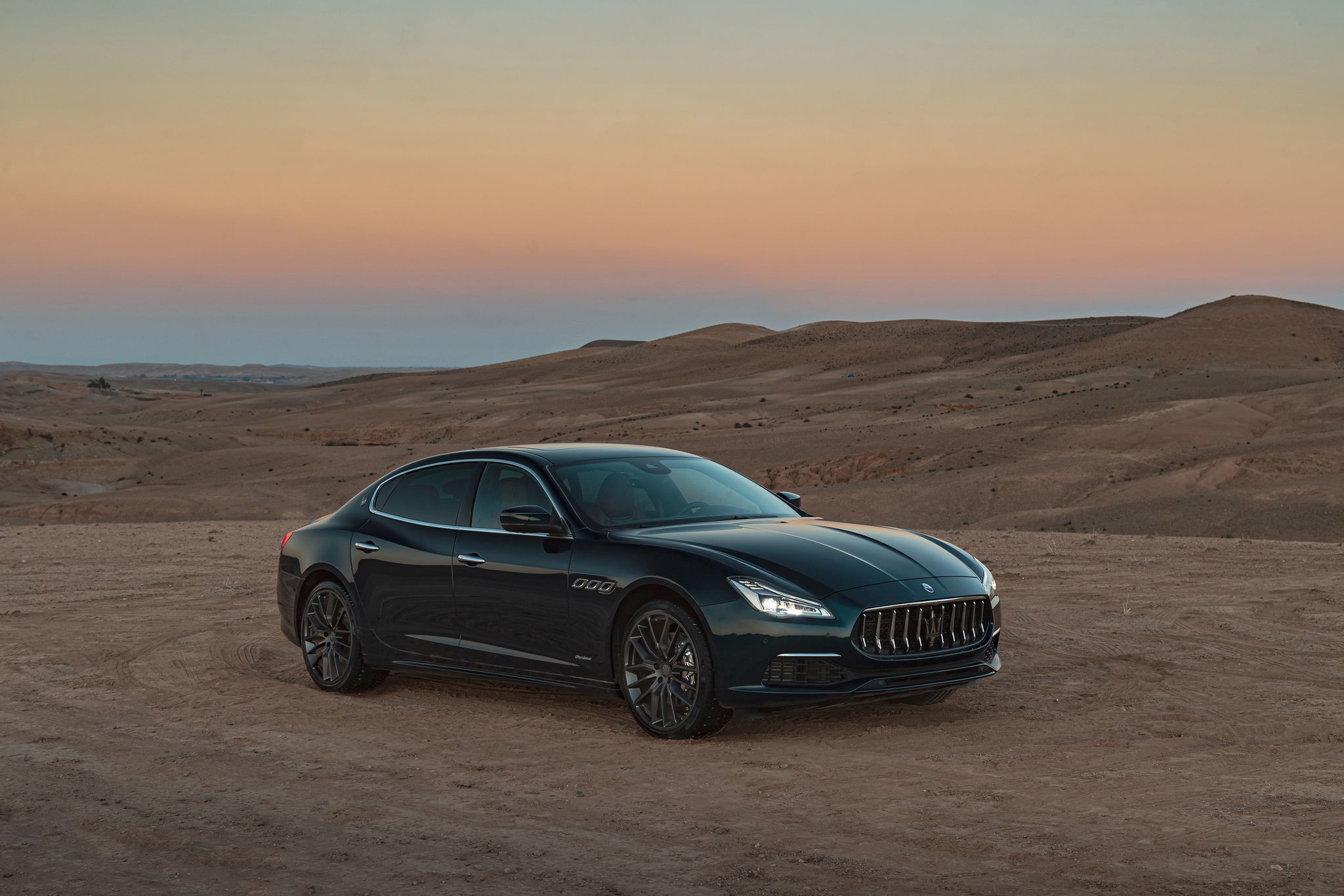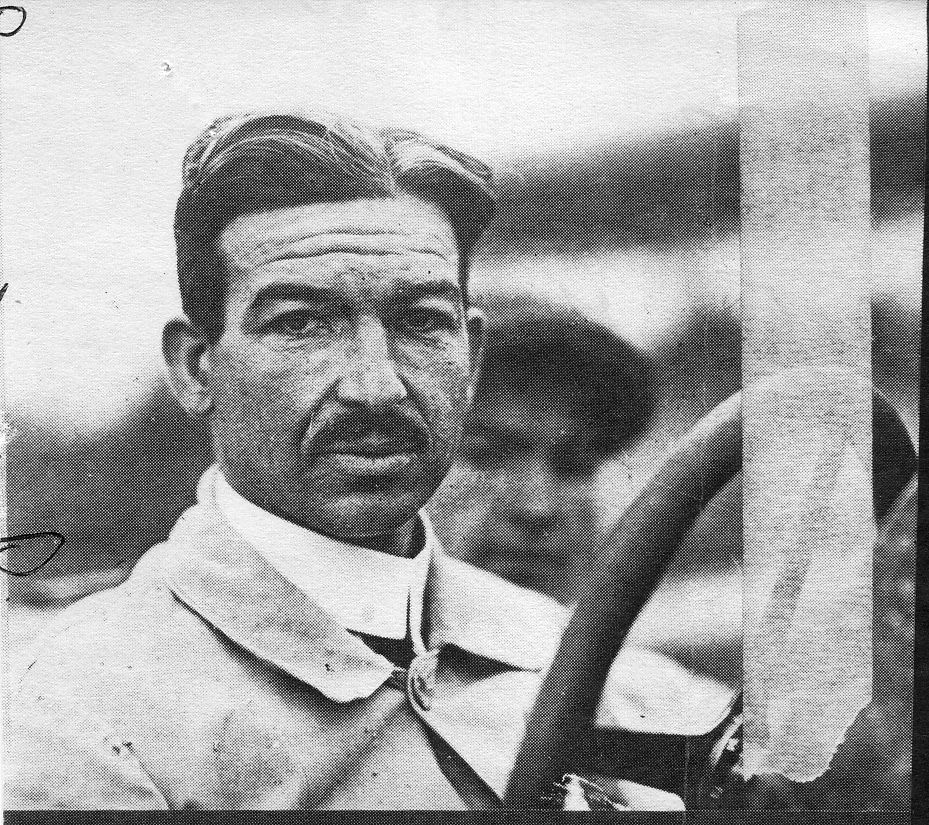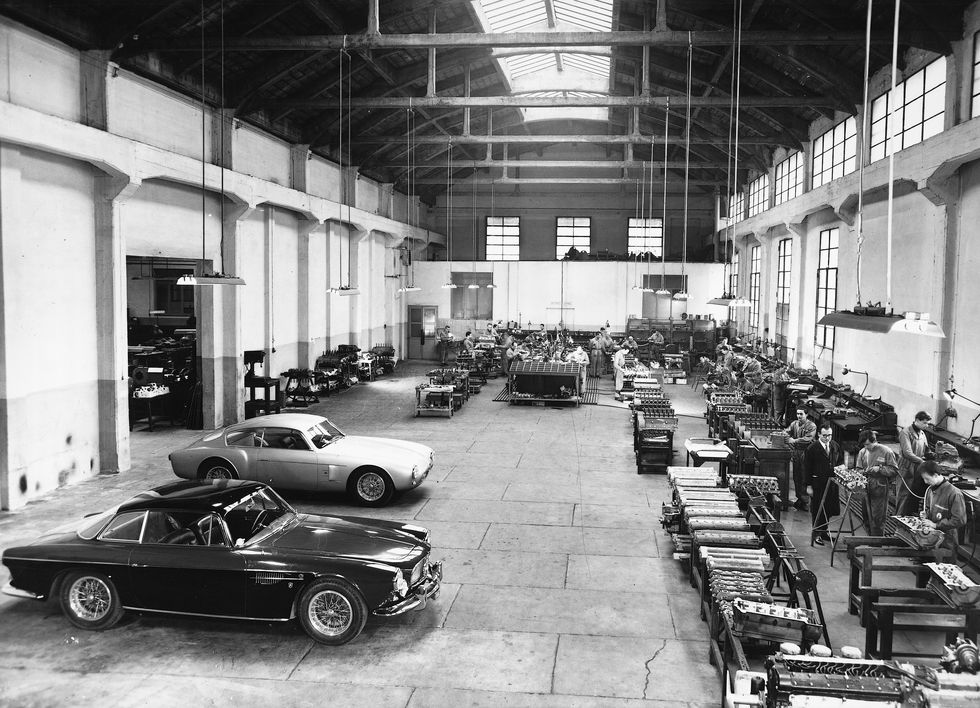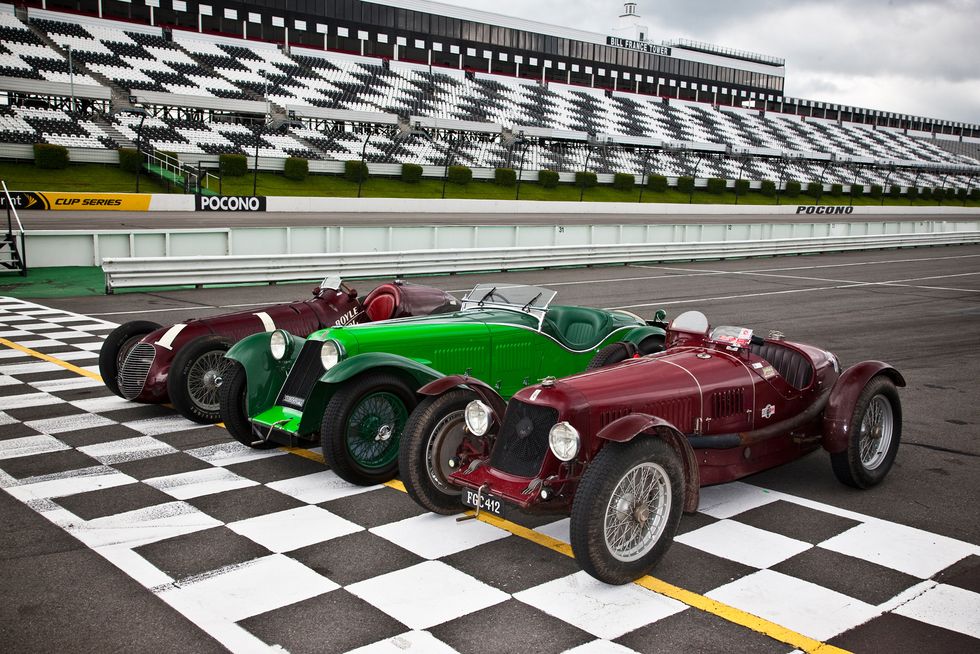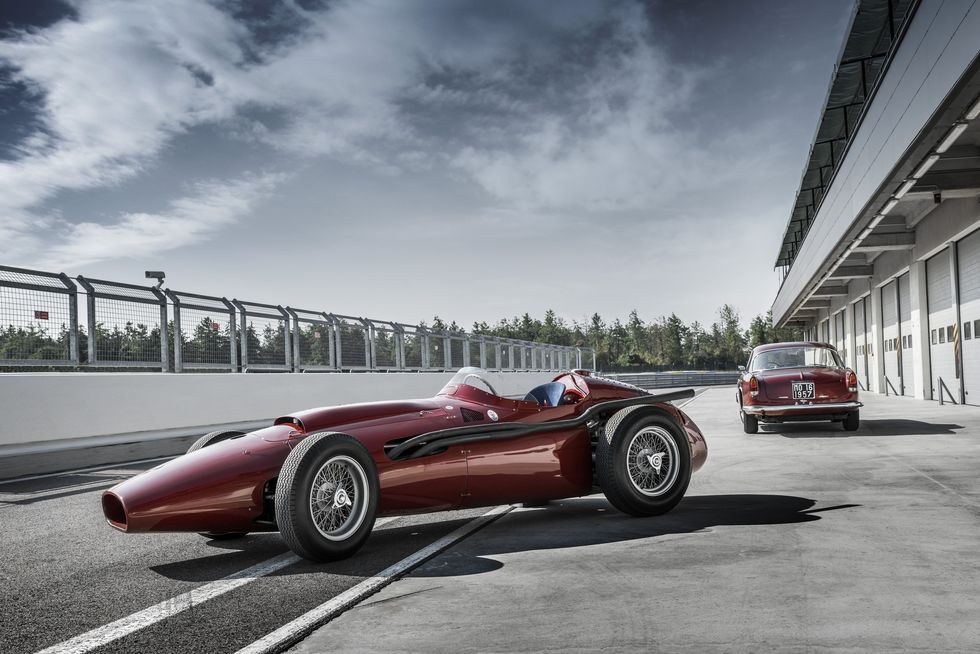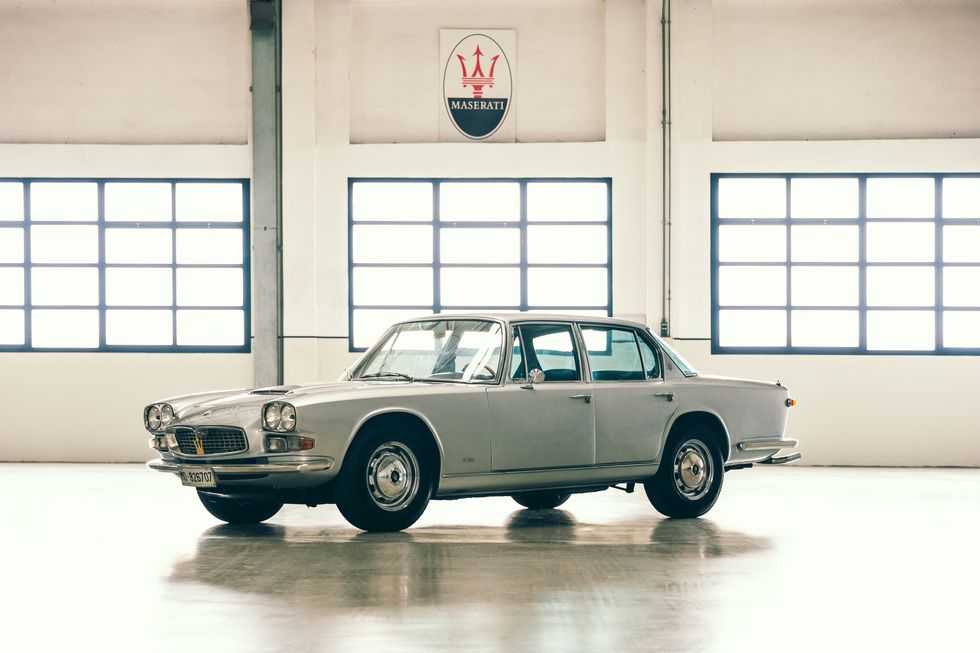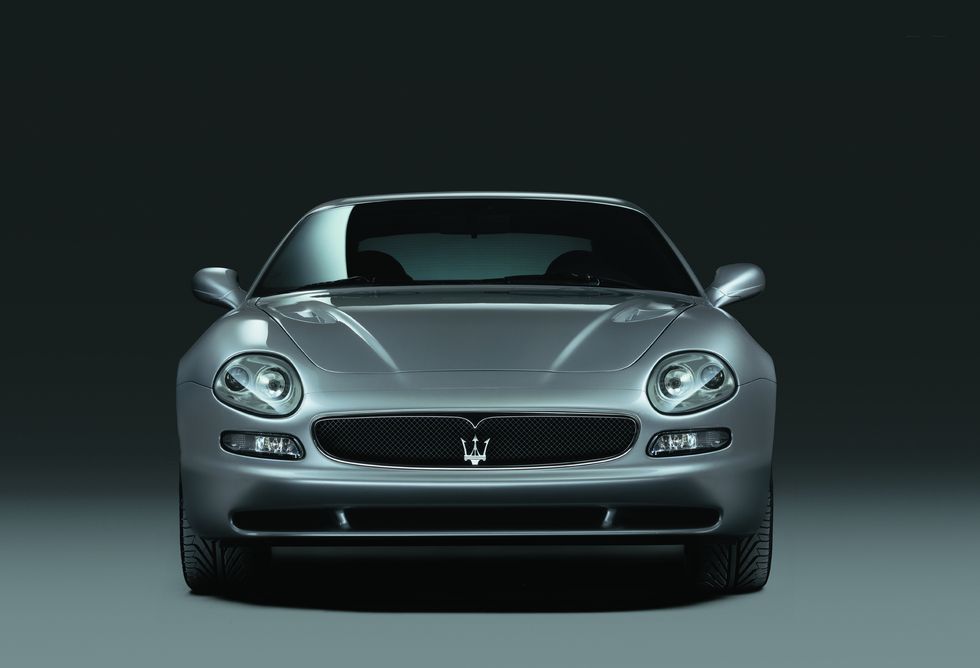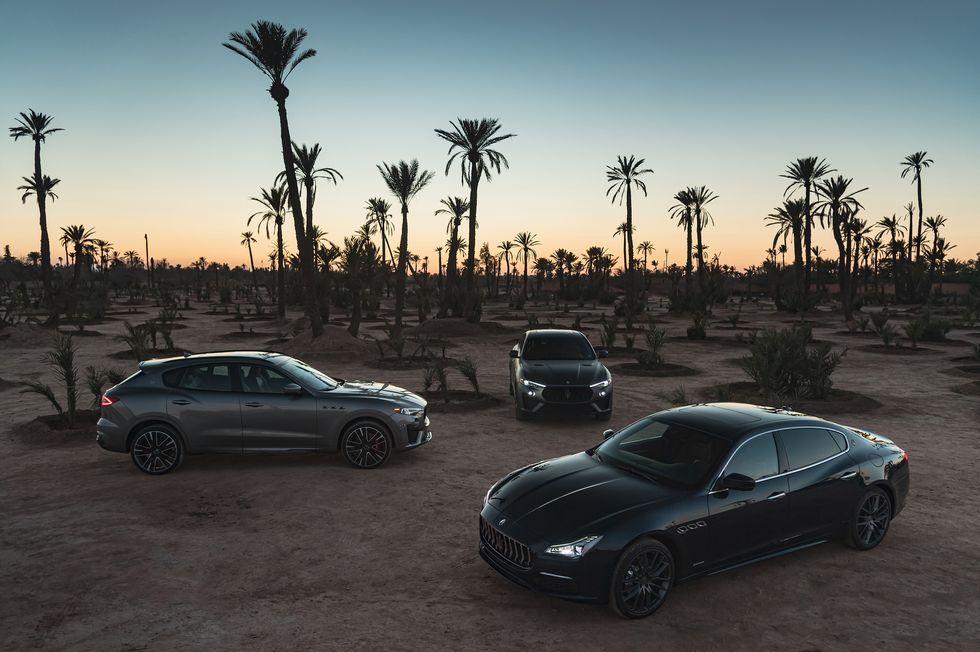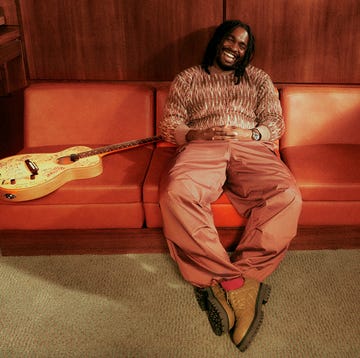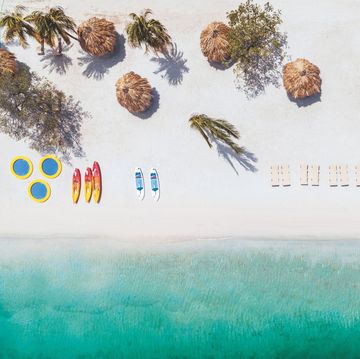The Italian word for luxury is lusso, but it might as well be Maserati. For more than a century, the brand has redefined how we think about cars, pushing the upper limits of racing performance through bold feats of engineering and revolutionising the sports-car experience with innovative Italian design. There’s a reason why Maserati has been the car of choice for the likes of everyone from Lionel Messi and Bradley Cooper to Luciano Pavarotti and Rocky Balboa – and it starts with a story of five brothers.
1914: A Family Welcoming
Maserati was born of a shared family passion for motorsports and engineering excellence. Carlo, the eldest of the Maserati brothers, laid the foundations for the marque at the turn of the century, designing single-cylinder engines in his spare time while working as a test driver for Fiat and Isotta Fraschini.
After Carlo’s death in 1910, his mantle fell on the shoulders of the middle Maserati sibling. Alfieri, like Carlo, was a gifted mechanic, having worked with engines since the age of 16. In December 1914, he founded the Società Anonima Officine Alfieri Maserati workshop with his brothers Ettore and Ernesto, but just five months later, Italy declared war on Austria-Hungary. The outbreak meant the two eldest brothers were enlisted, while the youngest, Ernesto, ran the workshop in Bologna. It was during this time that Alfieri designed and patented a new, more efficient type of sparkplug, which found its way into warplanes, including the one flown by the poet Gabriele D’Annunzio over Vienna.
1918-20: Alfieri At The Races
Once the war had ended, Alfieri and Ettore reunited with Ernesto and moved the workshop into larger premises at an old bottle factory. Here, the three brothers could finally begin building their legacy and soon set about assembling race cars using existing and modified parts. In 1920, Alfieri started on the Mugello Circuit in a modified Czech Nesseldorf, which fell apart on the rough surface. A second disappointing start in the same year left the brothers with no other alternative: they would have to build their own car from scratch.
1926: Maserati Meets The World
From 1922, Maserati began working in partnership with Diatto, redesigning the engines of its racing cars and steering them to victory after victory. The relationship ended in 1926 as the brothers decided to bet on their own name, introducing the world to Maserati and its iconic trident symbol. The logo was designed by the fifth brother, Mario, and inspired by Bologna’s beloved fountain of Neptune, while its first car, the Tipo 26, was a natural progression from those Alfieri had worked on with Diatto.
Alfieri raced the Tipo 26 for the first time at the 1926 Targa Florio, finishing first in its Grand Prix class and ninth overall. From here, Maserati established itself as a force to be reckoned with. Legendary driver Baconin Borzacchini joined the team in 1927, setting a speed record behind the wheel of a Maserati V4 in 1929, which would stand for another eight years. The following year, the Tipo 26M debuted at, and won, the Reale Premio di Roma with Luigi Arcangeli at the wheel.
1932: Tragedy Hits The Family
On 3 March 1932, grief united Bologna, the racing world and the Maserati family when Alfieri died suddenly from surgical complications. He was just 44 years old. The entire city came to a standstill for the funeral, with his death leaving a gaping hole in the family, the company and the city. To ensure Maserati’s continued success, Bindo, the eldest surviving brother, left his job at Isotta Fraschini to become chairman, with Ernesto stepping up to lead on technical innovation.
1937-40: The Indy 500
Faced with stiff competition from the German duo of Mercedes and Auto Union (now Audi), Maserati was forced to take decisive action in 1937 to continue its upward trajectory. Ernesto, Ettore and Bindo sold the company to the Orsi family, allowing them to focus solely on technical innovation rather than the day-to-day running of the business. The first fruit of the new set-up was the 8CTF “Boyle Special” – a modest car compared to the bells-and-whistles approach of the Germans, but a very fast one. It stormed the 1939 Indianapolis 500 at an average speed of 185km/h, making Maserati the first European marque to win the title. It would repeat the feat the following year.
1947: The Maserati A6
Following the end of World War II, during which production at the new headquarters in Modena had been forced to shut down, Maserati immediately began work on a new breed of car: its very first GranTurismo. A two-door coupé designed by the legendary Sergio Pininfarina, it was christened the A6, for Alfieri, and became the first Maserati road car to go into production. It was also one of the last major projects headed up by Ernesto, Ettore and Bindo, who left the company shortly after.
1954: Maserati Storms The Grands Prix
The 1950s saw the birth of the Formula One world championship, with the new format bringing Maserati renewed success on the racetrack. In 1954, its legendary driver Juan Manuel Fangio won the Argentine and Belgian Grands Prix for Maserati before defecting to Mercedes-Benz mid-series. By 1956, Fangio had signed to Ferrari, intensifying the Modena brand’s rivalry with Maserati. Fangio won the series for Ferrari, but returned to Maserati the following year to drive a bright red 250F to victory.
1957-59: La Dolce Vita
By the end of the decade, Maserati had begun to focus its efforts on luxury road cars. A prototype 3500 GT known as “the White Dame” debuted in 1957 and caught the attention of Iran’s outrageously wealthy emperor. He challenged Maserati engineer Giulio Alfieri to build him something even more opulent, resulting in the 5000 GT, or “the Shah of Persia”. An eight-cylinder racing engine in a 3500 GT chassis, it was finished with delicate gold and precious wood, and remains to this day a pinnacle of luxury car-making.
1967: A New Wind
The late 1960s saw Maserati forge a new relationship with Giorgetto Giugiaro, arguably the most influential automotive designer of modern times. The first result of the partnership was the Ghibli, a sporty eight-cylinder with dramatic lines, a sleek, shark-shaped nose and pop-up headlights. Named after an Egyptian desert storm wind, the Ghibli was initially conceived as a limited run of 100, but its popularity meant Maserati produced almost 1,300.
1978: A Presidential Seal Of Approval
In 1963, the first Quattroporte had introduced the world to the concept of the luxury sports saloon. But it was in the late 1970s and 80s that the four-door became the official car of both political and Hollywood heavyweights. Italian president Sandro Pertini adopted a special Royale edition as his state car in 1978. Four years later, Sylvester Stallone drove a Quattroporte on-screen in Rocky III (1982), with David Cronenberg using the car in his 1983 horror The Dead Zone and his seminal remake of The Fly (1986).
1993: Maserati And Ferrari, Together
After decades of bitter rivalry, Maserati and Ferrari were brought under one roof when the former was acquired by the latter’s owner, the Fiat Group. More than 40 years of competition and one-upmanship were suddenly replaced by a new drive for innovation, the first product of which was the 3200 GT: a Giugiaro-designed coupé fitted with a Ferrari engine. From this came the Spyder, the car which, in 2001, saw Maserati return to the US market after a 12-year absence.
2003: The Pininfarina Era
The new millennium saw Maserati revisit its own history, reuniting with the Pininfarina company for an all-new Quattroporte. Like the original, the saloon became the definitive Maserati of its time, and once again was adopted as the official presidential car, this time by Carlo Azeglio Ciampi. A second Pininfarina collaboration, the GranTurismo, debuted in 2007, sharing similarly sleek styling but a smaller, lighter two-door frame.
2020: A Royale Return
To mark the new decade Maserati is continuing its legacy of creating ultra-rare premium editions, reviving the Royale name for a series of Quattroporte, Levante and Ghibli special configurations. A celebration of automotive luxury, the series is based on the 1986 Quattroporte Royale which was built to order for Luciano Pavarotti and just 50 other clients. Like its predecessor, the 2020 Royale is strictly limited, with only 100 cars to be produced across the series. The design makes use of subtle flourishes such as silver brake calipers and custom anthracite rims. The interior is wrapped in either full-gran Pieno Fiore leather or the unique PELLETESSUTA™, an innovative woven fabric which uses thin strips of nappa leather for an ultra-lightweight finish, made exclusively for Maserati by Ermenegildo Zegna. Completing the refined feel are high-gloss inserts and an “una de cento” (one of a hundred) plaque.
The Future: Maserati Goes Electric
After years of anticipation, Maserati is heralding a new era with a radical plan to electrify its entire range by 2023. Starting with the launch of a new two seater super sports car, named MC20, a natural evolution of the iconic MC12, which will mark a return to motorsport. The MC20 will be built at the historical plant in Viale Ciro Menotti, Modena, and is planned to have its worldwide debut at the end of May 2020. Its first EV, the Ghibli Hybrid, is due to enter production in 2020. This will be followed by a new mid-sized SUV and by new generations of the GranTurismo and GranCabrio, which will feature the brand’s first fully electric powertrain.
Be part of a luxurious history and an innovative future with Maserati. Prices start from £54,800

